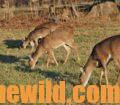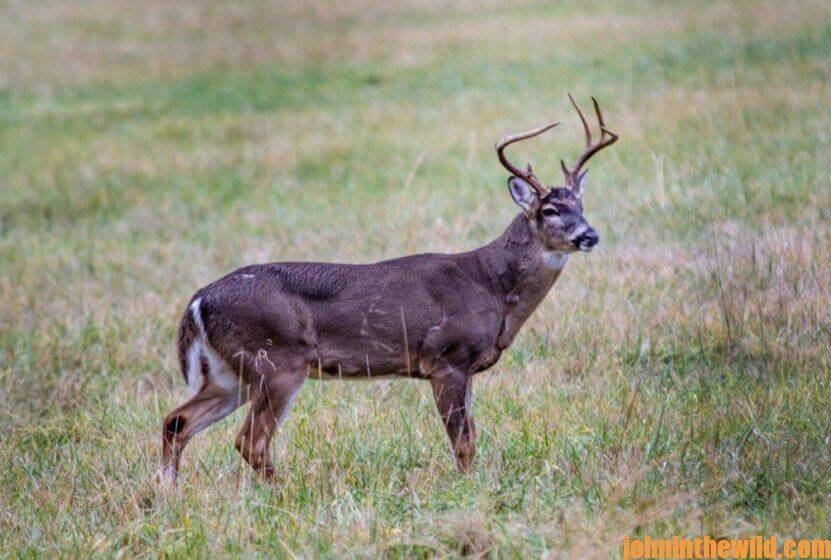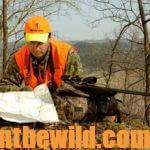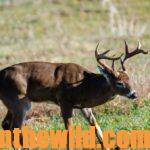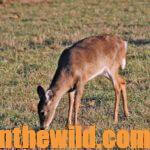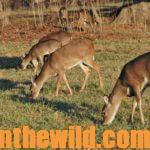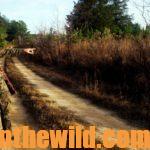Editor’s Note: A couple of weeks ago I went out and spent several days photographing wild deer. The rut just had kicked in, which allowed me to learn new things about hunting the rut that I never knew previously. This week, I’ll share what I’ve learned and have seen to help you become a better rutting deer hunter.
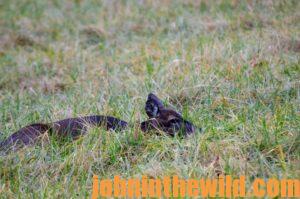 Just because the doe has come into estrus doesn’t necessarily mean that she’s ready for a buck to breed her. Although she may be receptive to a buck, the doe often will want to be bred at one certain time during her estrous cycle. This past week, while I was photographing deer in the wild, I discovered a young buck standing out in the middle of a field looking for a doe. I started photographing him. He was looking hard and trying to pinpoint the doe that his nose told him was in the area and was ready to breed. However, even though he could smell her and knew she was close, he couldn’t find her.
Just because the doe has come into estrus doesn’t necessarily mean that she’s ready for a buck to breed her. Although she may be receptive to a buck, the doe often will want to be bred at one certain time during her estrous cycle. This past week, while I was photographing deer in the wild, I discovered a young buck standing out in the middle of a field looking for a doe. I started photographing him. He was looking hard and trying to pinpoint the doe that his nose told him was in the area and was ready to breed. However, even though he could smell her and knew she was close, he couldn’t find her.
A friend of mine went about 70 yards below me and began photographing the buck, but as I looked at my friend to try and see what he was photographing, I spotted what I thought was a bobcat. I barely could see  a brown back and the tips of two ears above the grass, and I knew that what I was seeing was too small to be a deer. The only logical conclusion I could come up with was that it was a bobcat lying in short grass about 70 yards from the buck in the field. I left my stand where I was photographing the buck, went down to my friend and asked if he was photographing the bobcat. When he answered, “No, I haven’t seen a bobcat,” I zoomed in on the critter in the grass, and through my lens, I realized the animal was a doe lying as flat on the ground as I’d
a brown back and the tips of two ears above the grass, and I knew that what I was seeing was too small to be a deer. The only logical conclusion I could come up with was that it was a bobcat lying in short grass about 70 yards from the buck in the field. I left my stand where I was photographing the buck, went down to my friend and asked if he was photographing the bobcat. When he answered, “No, I haven’t seen a bobcat,” I zoomed in on the critter in the grass, and through my lens, I realized the animal was a doe lying as flat on the ground as I’d 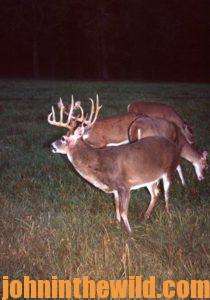 ever seen a deer. The grass was only 4-6 inches high, and she had her head and her neck flat on the ground. I don’t know how she got her body as flat as she did, so that the buck couldn’t see her. This wide-open pasture had very-little vegetation in it, and I realized as difficult as the doe was for me to see, it was probably just as difficult for that buck to spot her. The buck kept moving closer to where his nose told him that the doe was in the grass. Finally, he got close enough to jump her up, and he started chasing her.
ever seen a deer. The grass was only 4-6 inches high, and she had her head and her neck flat on the ground. I don’t know how she got her body as flat as she did, so that the buck couldn’t see her. This wide-open pasture had very-little vegetation in it, and I realized as difficult as the doe was for me to see, it was probably just as difficult for that buck to spot her. The buck kept moving closer to where his nose told him that the doe was in the grass. Finally, he got close enough to jump her up, and he started chasing her.
I learned from this experience that many times when a doe didn’t want to breed, she’d try and hide from a buck – even if she was out in the open. The best time to take a shot at a buck might be when he was stopped dead still and searching for a doe, like this buck was, out on the green field. If bucks always did what they were supposed to do during the rut, many older-age-class bucks would be harvested during the season. However, another interesting item that I learned was that many times during the rut, a mature, big buck only would breed at night or in cover. Many of these bigger bucks knew that the only time that they were safe from hunters was to move into an opening, whether a green field or a pasture, after dark. Oftentimes after dark, that buck might then find several does ready to breed.
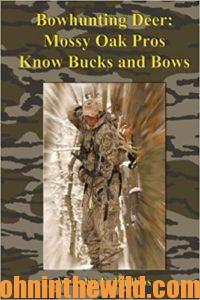 To learn more about hunting for deer, check out John E. Phillips’ bowhunting books, available in Kindle and print, “Bowhunting Deer: Mossy Oak Pros Know Bucks and Bows” (http://amzn.to/1QGvdQx) and “Bowhunting Deer: The Secrets of the PSE Pros” (http://amzn.to/VBr1qW). You may have to copy and paste this link into your browser. (When you click on this book, notice on the left where Amazon says you can read 10% of the book for free).
To learn more about hunting for deer, check out John E. Phillips’ bowhunting books, available in Kindle and print, “Bowhunting Deer: Mossy Oak Pros Know Bucks and Bows” (http://amzn.to/1QGvdQx) and “Bowhunting Deer: The Secrets of the PSE Pros” (http://amzn.to/VBr1qW). You may have to copy and paste this link into your browser. (When you click on this book, notice on the left where Amazon says you can read 10% of the book for free).
John E. Phillips has published several more books this fall and winter of 2020 you’ll enjoy.
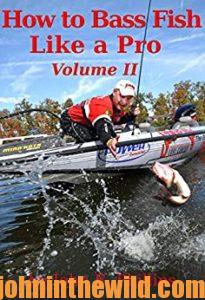 1) “How to Bass Fish Like a Pro, Volume II” – available in Kindle and print at https://www.amazon.com/gp/product/B08LBD7M4G/ref=dbs_a_def_rwt_hsch_vapi_taft_p5_i2
1) “How to Bass Fish Like a Pro, Volume II” – available in Kindle and print at https://www.amazon.com/gp/product/B08LBD7M4G/ref=dbs_a_def_rwt_hsch_vapi_taft_p5_i2
In “How to Bass Fish Like a Pro, Volume II,” you’ll learn tips and tactics from 21+ Bassmaster Classic winners, two Major League Fishing champions and 20+ Bassmaster Anglers of the Year about some of the dramatic changes in bass fishing.
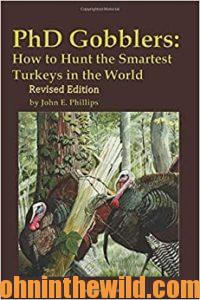 2) “PhD Gobblers: How to Hunt the Smartest Turkeys in the World, Revised Edition” – available in Kindle, Print and Audible at https://www.amazon.com/gp/product/B083V83RLG/ref=dbs_a_def_rwt_hsch_vapi_taft_p4_i8
2) “PhD Gobblers: How to Hunt the Smartest Turkeys in the World, Revised Edition” – available in Kindle, Print and Audible at https://www.amazon.com/gp/product/B083V83RLG/ref=dbs_a_def_rwt_hsch_vapi_taft_p4_i8
Turkeys that have earned their PhDs in the turkey-hunting wars know more about hunter-dodging than most hunters know about turkey hunting. These turkeys have built such a huge database on humans they’ve earned their PhDs.
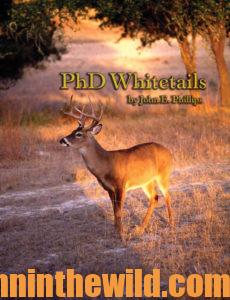 3) “PhD Whitetails” – available in Kindle and Print and soon to be in Audible at https://www.amazon.com/gp/product/1979793387/ref=dbs_a_def_rwt_hsch_vapi_taft_p7_i3
3) “PhD Whitetails” – available in Kindle and Print and soon to be in Audible at https://www.amazon.com/gp/product/1979793387/ref=dbs_a_def_rwt_hsch_vapi_taft_p7_i3
To become a “PhD Whitetail,” a whitetail deer has to have gone to school on hunters. He knows when to move, where to move, and how to move to avoid detection. The professional hunters in this book have spent their lifetimes finding these bucks with doctorates.
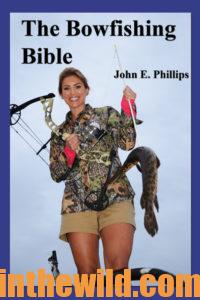 4) “The Bowfishing Bible” – available in Kindle, Print and Audible at
4) “The Bowfishing Bible” – available in Kindle, Print and Audible at
https://www.amazon.com/gp/product/B01D566HM0/ref=dbs_a_def_rwt_hsch_vapi_taft_p4_i1
This book doesn’t promise salvation or a ticket to heaven, but it does give you much of the information you need to be a happy, successful, productive and winning bowfisherman.
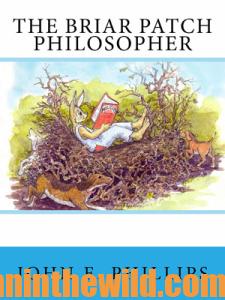 5) “The Briar Patch Philosopher” – available in Kindle, Print and Audible at https://www.amazon.com/gp/product/B00MX0ZODI/ref=dbs_a_def_rwt_hsch_vapi_taft_p5_i4
5) “The Briar Patch Philosopher” – available in Kindle, Print and Audible at https://www.amazon.com/gp/product/B00MX0ZODI/ref=dbs_a_def_rwt_hsch_vapi_taft_p5_i4
Some of the reviews for this book include statements like, “I find myself looking through these wonderful thoughts about life, courage, love, children and God. This collection of sayings are very useful in helping me control my emotions. Some of my favorites include:
“Feelings change, Truth remains.”
“Embrace fear, because it’s an excellent motivator.”
“Life is a race. The beginning, we can’t control, and the end can’t be determined. But how well we run in the middle is all that counts. ”
Tomorrow: Realize Does Can Direct You to a Buck Deer

